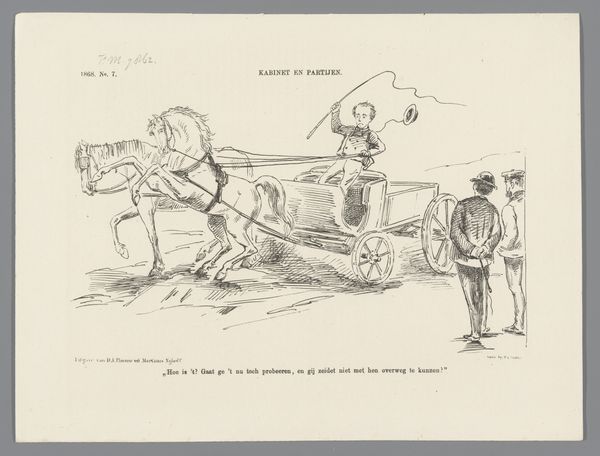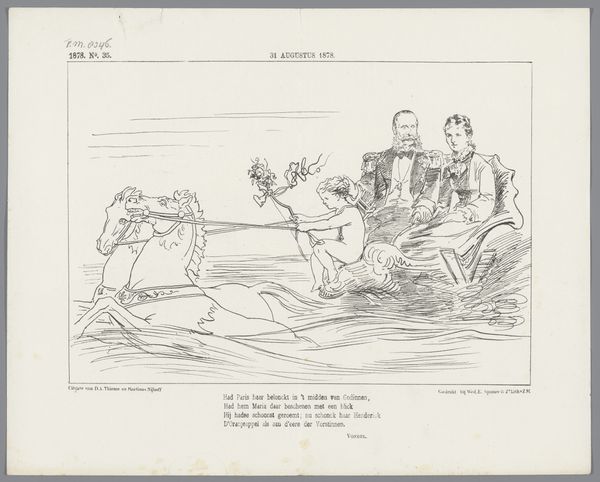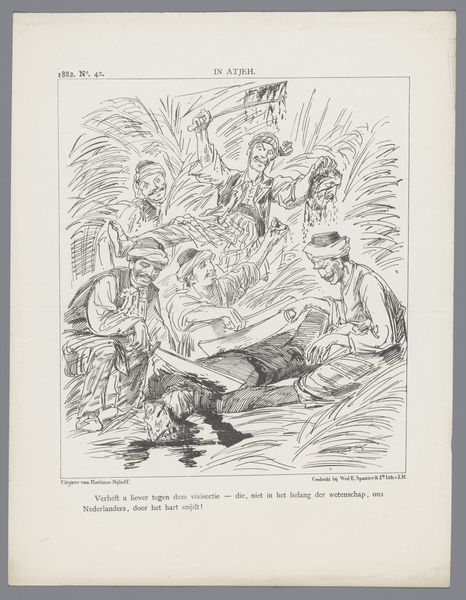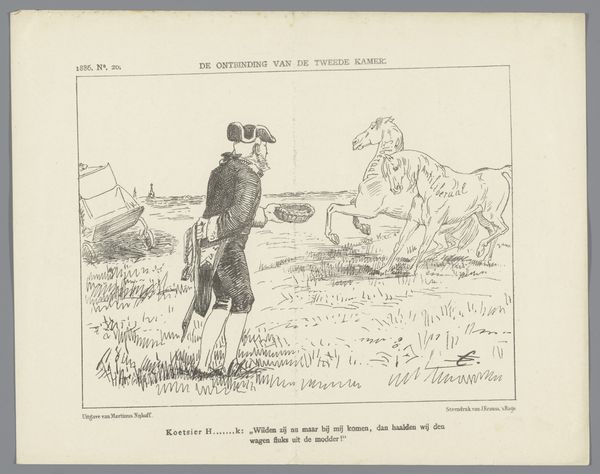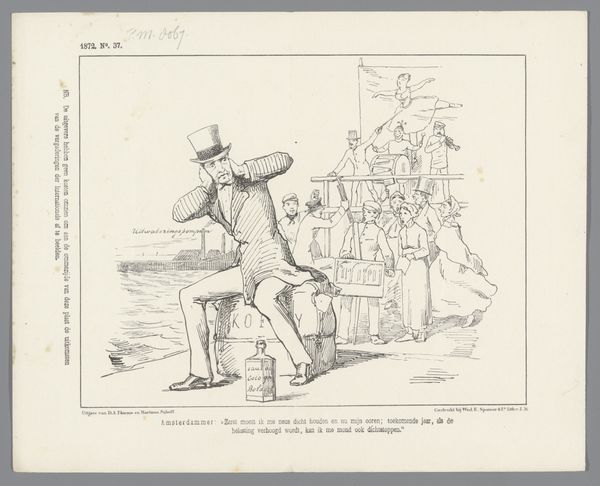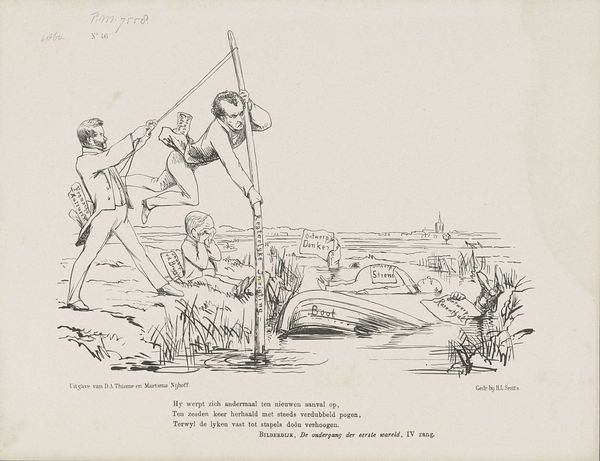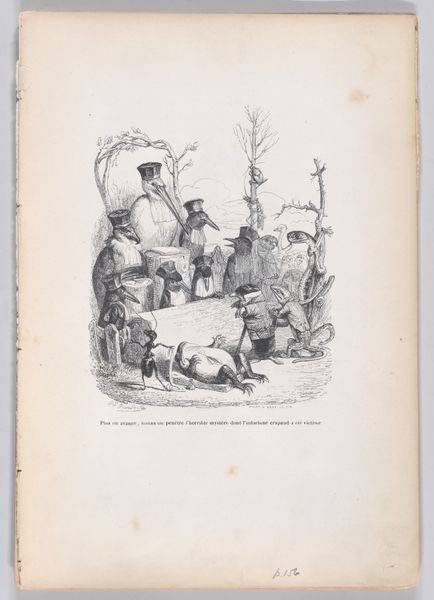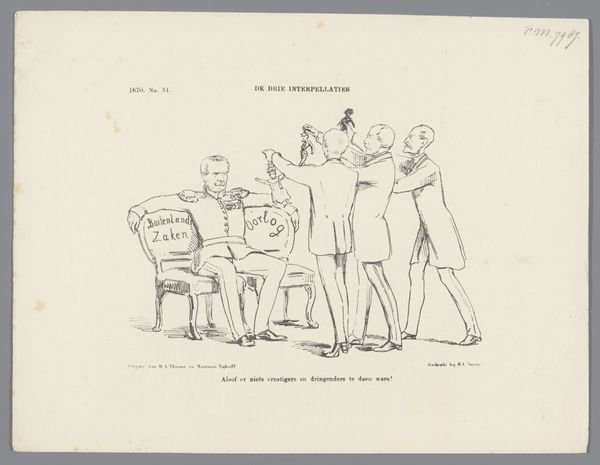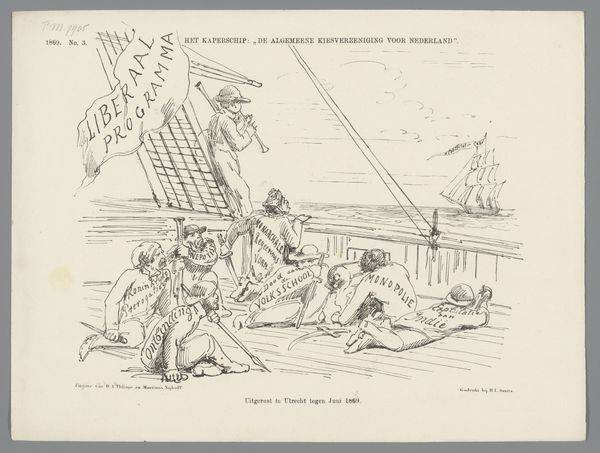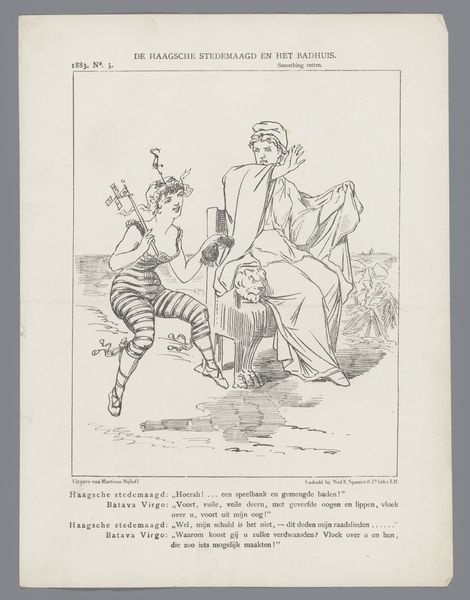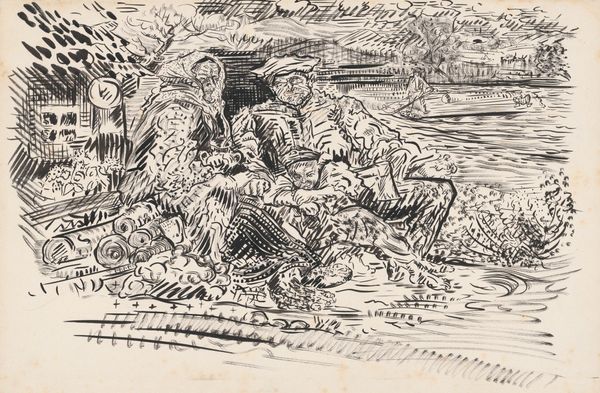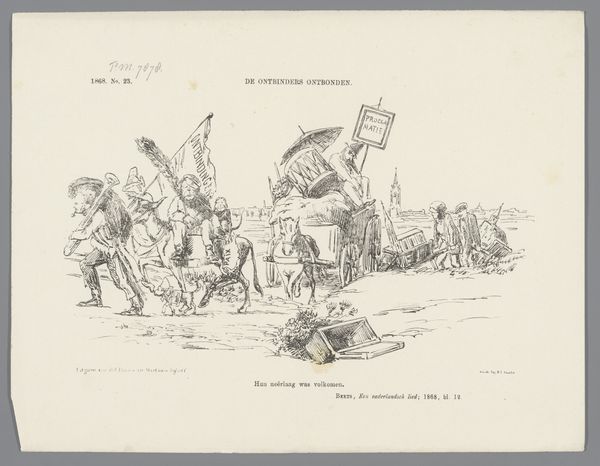
drawing, ink, pen
#
drawing
#
comic strip sketch
#
quirky sketch
#
narrative-art
#
caricature
#
sketch book
#
personal sketchbook
#
ink
#
idea generation sketch
#
sketchwork
#
ink drawing experimentation
#
sketchbook drawing
#
pen
#
storyboard and sketchbook work
#
sketchbook art
Dimensions: height 275 mm, width 215 mm
Copyright: Rijks Museum: Open Domain
Curator: Here we have "Spotprent op de oppositiepartijen, 1863", which translates to "Cartoon on the opposition parties, 1863," by Johan Michaël Schmidt Crans. It's an ink and pen drawing. What strikes you about it? Editor: Immediately, the clear political message jumps out. It's very direct, like a visual editorial. The exaggerated figures and stark lines really convey a sense of struggle, and a dark one, given what they are mired in. Curator: It does pack a punch, doesn't it? The drawing depicts members of the opposition parties in the Dutch parliament attempting to pull down...well, it's complicated. They're trying to pull down what the artist identifies, in Dutch, as "Openbare School," "Rigting en Zamenstelling," and "Spoorwegen, Arresten & Regerings reglement." And it seems as if the group is stuck in a bog or sinking into quicksand. Editor: Ah, so public schools, regulations, the railways, government decrees… they’re literally mired in the things they oppose. What about that large sign? "Fransche Pantser Plaat"? Curator: Good eye. "French Armor Plate." That refers to a major political issue at the time: the building of armored ships, and whether they should be made with Dutch or imported French materials. It became symbolic of broader conflicts of national interests versus international cooperation. Editor: So it's a commentary on the opposition's stance on national development and key policy issues, positioning them as obstructive, weighed down by their resistance to progress. Curator: Exactly. Note the artist chose the medium of drawing, allowing for quick dissemination through print, reaching a wider public to shape opinion, something not dissimilar from our modern memes. Editor: It's interesting to see how effective caricature was, and still is, in shaping political discourse. This piece feels incredibly relevant even today, demonstrating that political struggles have always been visually represented to generate emotional response. The artist uses drowning to evoke desperation. Curator: It is powerful stuff. This cartoon reminds us that images have always been vital weapons in political debates. Schmidt Crans captured a specific moment, but the themes of opposition, progress, and national identity still resonate today. Editor: Indeed. This caricature allows us to examine historical anxieties, making the case to better interrogate our present assumptions, especially when they present as “common sense.”
Comments
No comments
Be the first to comment and join the conversation on the ultimate creative platform.
